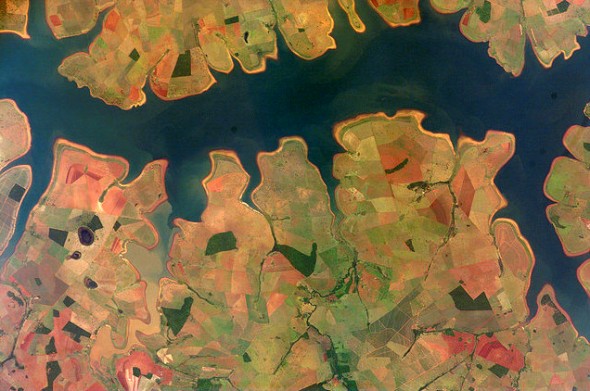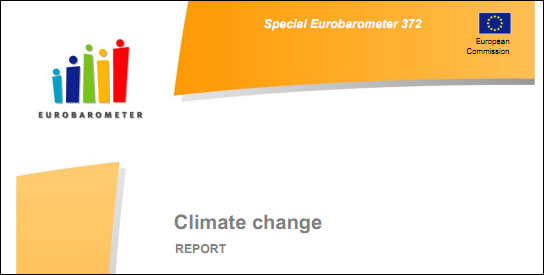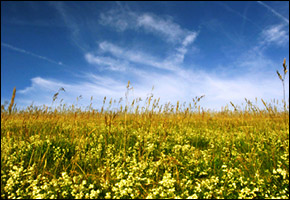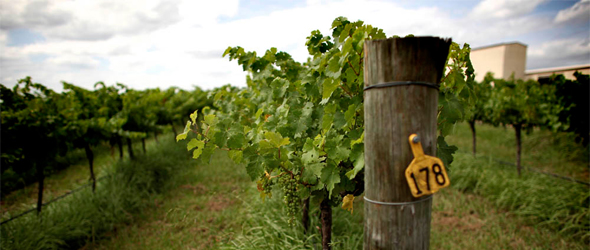Report: 25% of World’s Agriculture Growing in Regions of High Water Stress
A new study from the World Resources Institute shows the connection between crops and water scarcity.

By Codi Yeager-Kozacek
Circle of Blue
More than a quarter of the world’s crops are growing in places that are highly water-stressed — classified as areas where at least 40 percent of available water supplies are withdrawn each year — according to a new study from the Washington, D.C.-based World Resources Institute. Researchers say this correlation could increase as demand for food grows and more users compete for scarcer water supplies.
–Francis Gassert, researcher
World Resources Institute
“Agriculture accounts for 70 percent of water demand worldwide,” said Francis Gassert, the study’s lead researcher. “That increases to over 90 percent, if you count the amount of water consumption — the water that is withdrawn and evaporates instead of flowing back to the watershed in the form of runoff or wastewater.”
Places like the Great Plains of the United States, the world’s largest exporter of commodities like corn and soybeans, are extremely water-stressed, but high agricultural production does not necessarily mean high water stress. For example, Brazil and Argentina, the world’s second- and third-largest exporters of corn and soybeans, do not show much water stress. Gassert told Circle of Blue that this is because large areas of South America, such as the Amazon Basin, receive substantial amounts of rainfall that can replenish water supplies. In contrast, most agriculture in the U.S. Plains relies on irrigation from groundwater.
“There are also differences in terms of if there are competing sectors in the area,” he added. “South America is, in many areas, relatively sparse in terms of population. Whereas in India and China and many parts of Asia and Southeast Asia, there is a much higher level of stress, because there is not only high [water] demand for agriculture but high demand for industry and domestic use, as well.”
More People, More Problems
Projected shifts in precipitation could further stress some agricultural areas while reducing pressure in others. Meanwhile, economic and population growth will likely place more demand on water supplies. The United Nations currently projects that there will be 9.6 billion people by 2050, as compared with 7 billion today. These pressures could mean a rethink about the way that the world produces food, but it is unlikely that a single method will work in all places, according to Brian Lipinski, a WRI researcher working on food security.
“It’s a great balancing act. You’ve got all these additional people and agriculture being a huge part of economic development — 2 billion people are either directly or indirectly employed by agriculture worldwide — and yet agriculture’s impact on the environment and natural resources is just staggering in terms of land use, climate change emissions, and water,” Lipinski told Circle of Blue.
–Brian Lipinski, researcher
World Resources Institute
One way to close the food gap without expending any further resources on agricultural production is by eliminating food waste, according to Lipinski. Currently, one-in-four calories meant for human consumption is wasted due to either inadequate storage and transportation or people throwing food away.
“It’s quite staggering,” Lipinski said. “Twenty-four percent of all water used for agriculture goes to food that is lost or wasted. In terms of greenhouse gas emissions, if you stack food waste up against other countries, it would be the third-largest emitter globally.”
A news correspondent for Circle of Blue based out of Hawaii. She writes The Stream, Circle of Blue’s daily digest of international water news trends. Her interests include food security, ecology and the Great Lakes.
Contact Codi Kozacek









Cody, I think that the water stress percentages presented by the World Resources Institute and quoted in your article are generalized and probably have a large error of estimate. The data presented is not backed by a scientific study where a water balance was made, and there is no evidence to support the conclusions. If the evidence exists (sistematic studies of the areas under stress based on actual water withdrawal data compared to changes in water stored in surface and ground water sources, etc.), this should be provided to support the conclusions that you derived from their general map of stressed areas. I think that there are many areas in the world where sectors are indeed mining water resources, particularly ground water. But the shotgun approach used by WRI and your article have no scientific validity until demonstrated with data scaled to the areas presented. If its there, let WRI show it in a detailed article.